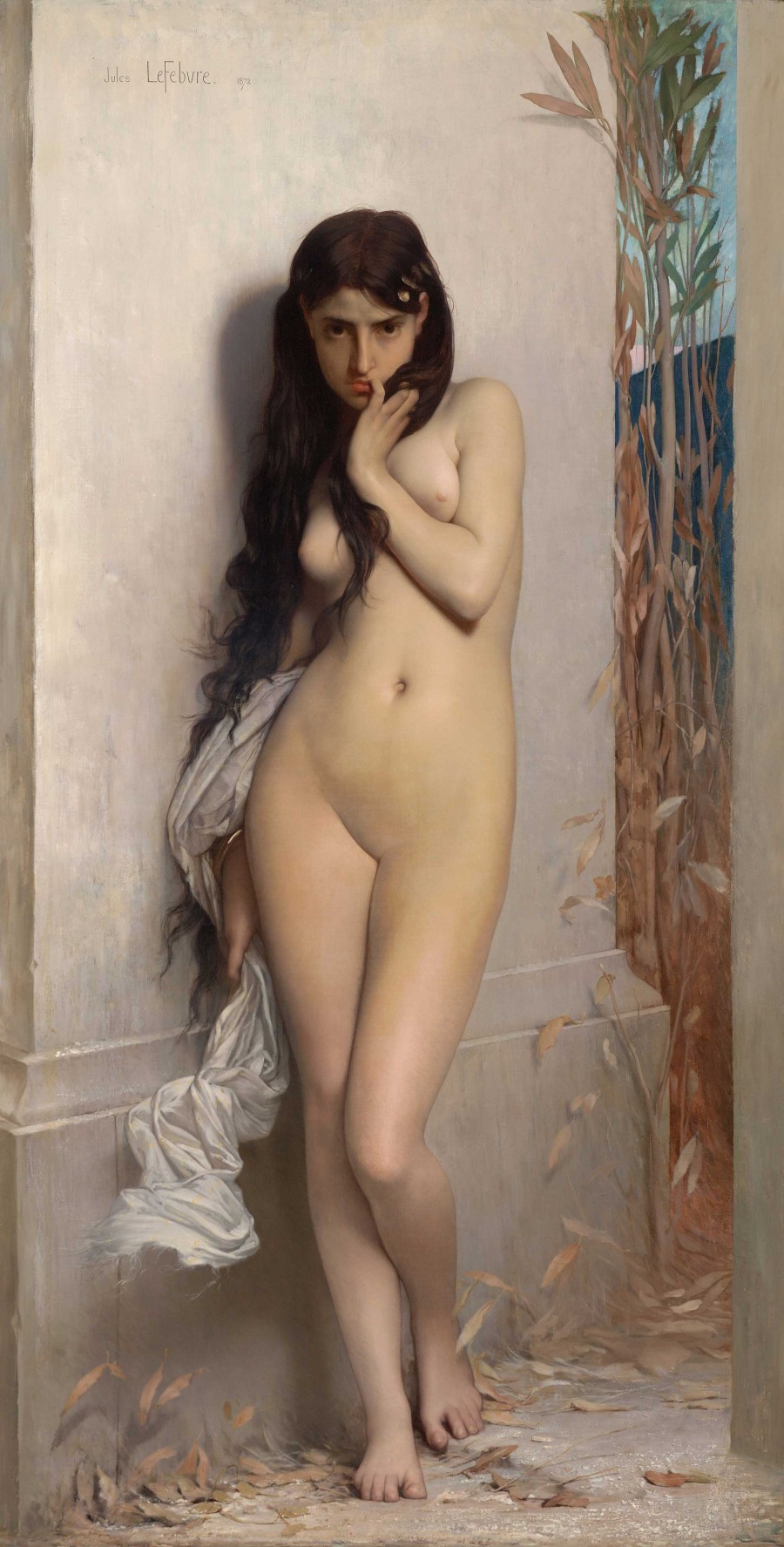An Epic on Childhood -22 Pachakuthira
why they called you green horse
you beautiful hopper on grass
i have no idea
but they said that you bring luck
and the brown one didn't
so human
i loved you all the same
despite their bias
or maybe because of it
i always looked for your beauty
and that of the silver fish and the kingfisher
in the women i loved

La cigale (The Grasshopper) -- Jules Joseph Lefebvre
A pachakuthira is a graasshopper, a member of the order Orthoptera, suborder Caelifera (which includes some 2,400 genera and about 11,000 species), and is probably the oldest extant chewing herbivorous insects. It is sometimes referred to as a short-horned grasshopper to distinguish it from a katydid (bush cricket), which has much longer antennae. In response to overcrowding,
ReplyDeletegrasshoppers in the Acrididae family, tactile stimulation of the hind legs increases, leading to higher
levels of serotonin, which causes them to change color, eat more, and breed faster, and the transformation of a solitary individual into a swarming one is induced by several contacts per minute over a short period. Under these circumstances, grasshoppers are known as locusts. Large grasshoppers, such as locusts, can jump about 20 body lengths (a meter) without using their wings.
"The meadow was wet with dew and Nick wanted to catch grasshoppers for bait before the sun dried the grass. He found plenty of good grasshoppers. They were at the base of the grass stems. Sometimes they clung to a grass stem. They were cold and wet with the dew and could not jump until the sun warmed them. Nick picked them up, taking only the medium-sized brown ones, and put them into the bottle. He turned over a log and just under the shelter
ReplyDeleteof the edge were several hundred hoppers. It was a grasshopper lodging house. Nick put about fifty of the medium browns into the bottle. While he was picking up the hoppers the others warmed in the sun and commenced to hop away. They flew when they hopped. At first they made one flight and stayed stiff when they landed, as though they were dead.
Nick knew that by the time he was through with breakfast they would be as lively as ever. Without dew in the grass it would take him all day to catch a bottle full of good grasshoppers and he would have to crush many of them, slamming at them with his hat. He washed his hands at the stream. He was excited to be near it. Then he walked up to the tent. The hoppers were already jumping stiffly in
the grass. In the bottle, warmed by the sun, they were jumping in a mass. Nick put in a pine stick as a cork. It
plugged the mouth of the bottle enough so the hoppers could not get out, and left plenty of air passage.
...
He stepped into the stream. It was a shock. His trousers clung tight to his legs. His shoes felt the gravel. The water was a rising cold shock.
Rushing, the current sucked against his legs. Where he
stepped in, the water was over his knees. He waded with the current. The gravel slid under his shoes. He looked down at the swirl of water below each leg and tipped up the bottle to get a grasshopper.
The first grasshopper gave a jump in the neck of the bottle and went out into the water. He was sucked under in
the whirl by Nick's right leg and came to the surface a little way down stream. He floated rapidly, kicking. In a quick circle, breaking the smooth surface of the water, he disappeared. A trout had taken him.
Another hopper poked his head out of the bottle. His antennae wavered. He was getting his front legs out of the bottle to jump. Nick took him by the head and held him
while he threaded the slim hook under his chin, down through his thorax and into the last segments of his abdomen. The grasshopper took hold of the hook with his front feet, spitting tobacco juice on it. Nick dropped him into the water.
Holding the rod in his right hand he let out line against the pull of the grasshopper in the current. He stripped off line from the reel with his left hand and let it run free. He could see the hopper in the little waves of the current. It went out of sight.
There was a tug on the line. Nick pulled against the taut line. It was his first strike."
--Ernest Hemingway, "The Big Two-Hearted River."
The Lefebvre painting of the cigale represents the grasshopper's realization that winter is nearing and that she is defenseless against its coming. (Actually, the backstory is probably just an excuse to paint a naked woman, as much the same way that so many Renaissance artists called their nude models "madonna and child.") But a "grasshopper" has often been a nickname of an unfaithful woman (who hops from man to man), such as in Anton Chekhov's short story, "Poprygunya", or in Jerry Paris' film. "The Grasshopper."
ReplyDeleteThis is a comment on the comments. They are as inspirational as the poetry they illustrate. As a writer myself, I'm moved to steal a phrase or two to use as material.
ReplyDeleteThank you Mr Vorhees. And thank you Mr Koshy. I'm not sure I understand all the references, and since I always look for meter, your poetry requires that I read it more and once, and maybe Google you to find out more.
Sincerely,
Arlene Corwin
Thanks, Arlene. It's nice to see that someone actually reads the comments and appreciates them.
ReplyDelete